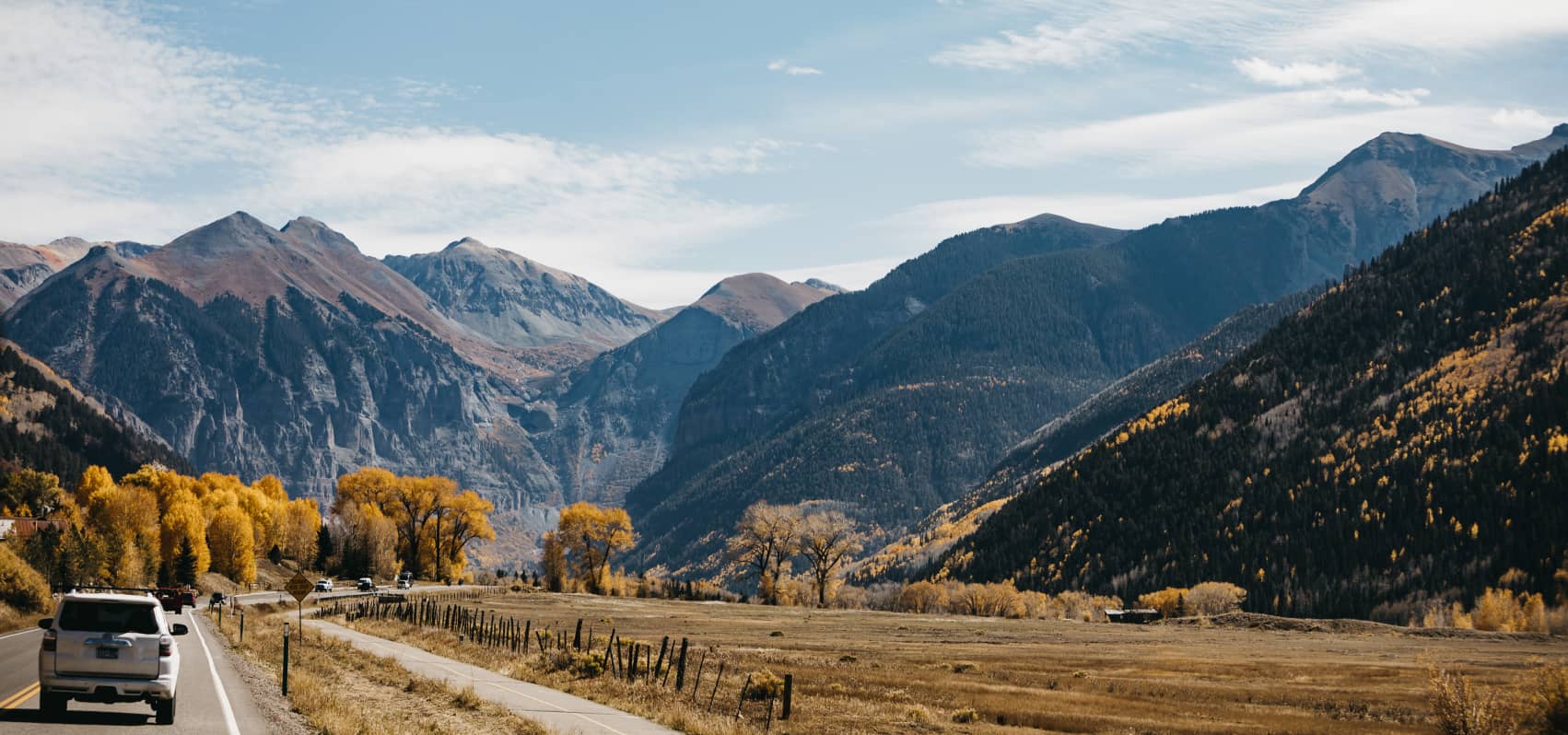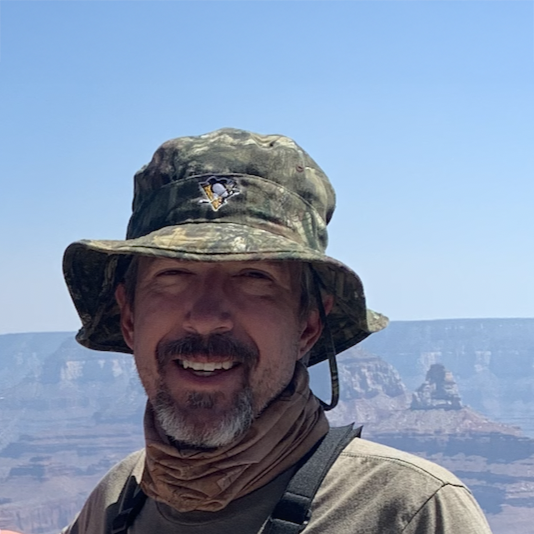Education
Avian Vagrancy: Why is that bird here?
Avian Vagrancy: From hurricanes to habitat shifts, uncover why birds appear far from home and what their journeys reveal about change.

This year in Colorado, an Anhinga's serpentine neck protrudes above the water of a Boulder pond on a June morning. The bird is 900 miles off course.
During an August sunset, a Wood Stork slowly probes the shallows of a Broomfield wetland for food. It should be in Florida - more than 1,400 miles to the southeast.
A lone Yellow Grosbeak alights upon a Ponderosa branch one late June afternoon in Estes Park. It is approximately 1,100 miles north of its nearest breeding ground in Hermosilla, Mexico.
These wayward avian visitors are all "vagrants" - birds that show up unexpectedly in locations far away from their species' established ranges. But while the phenomenon is easy to categorize, its cause is more difficult. That's largely because there is no single cause for avian vagrancy, but rather a myriad of reasons, which include intensifying climate change, faulty navigation, human terraforming and even simple avian curiosity.
In the eye of the storm.

When birds take to the air, they sometimes don't land where they intend - especially during hurricane season. These massive storms can capture birds in their rotating tendrils of wind and rain, carrying them hundreds - or even thousands - of miles from their planned destinations. And hurricanes are only getting stronger, since they're fueled by rapidly rising water temperatures stoked by greenhouse gas emissions.
"A lot of time what happens is that birds stay in the eye of the hurricane where it's calmer and they move with the eye," said Don Hall, Denver Audubon board member. "So, they drop out as the hurricane dies down and they find themselves in a new state or even a new country."
Hall points to the Cattle Egret as an example. Traditionally a bird found on the dry plains of Africa and parts of Asia, it unexpectedly emigrated in the latter 19th century to the Western Hemisphere, impelled by either roaring trade winds or possibly hurricanes. Since then, it has colonized nearly all of South and Central America, as well as the Caribbean and large swaths of the southern U.S. coast.
However, hurricanes are not the only climate events that can push vagrants into new territories. Non-cyclonic storms are also intensifying due to climate change. So-called "once-in-a-century" storms are happening far more frequently than their name implies. But they can have the same effect as their more powerful metrological cousins. Then there are lesser-known events involving changing ocean currents. These currents can pull critical food sources into new portions of the sea, coaxing hungry birds to follow them into unchartered territory.
David Sutherland, naturalist for the Environment for the Americas, recounts witnessing one such event while stationed at a marine biology lab on Oregon's coast. Though fueled by El Nino (a repetitive, multi-year climate pattern that warms Pacific Ocean waters), he said the event has a similar effect to the climate change currents that are warming ocean oceans around the globe.
"It brought in Brown Pelicans and everybody was talking about it because they'd never really been there," Sutherland said. "Ocean currents can definitely move birds either accidentally or by moving resources around and then the birds follow them. That's what the Brown Pelicans were doing."
Flying blind.

Birds have highly sophisticated wayfinding skills, using the stars, moon and sun (as well as visual landmarks) to navigate vast distances with extreme accuracy. For instance, the tiny Yellow Warbler makes its way every spring to Colorado from northwestern South America, a one-way journey of about 4,500 miles. Juvenile birds that haven't mastered the art of navigation may greatly undershoot, overshoot or miss their intended destinations entirely. Or, they could possibly have a glitch in their biological GPS.
"It could also be that, theoretically, a parasite could mess up their navigational system," said Sutherland.
Then again, sometimes directional intrusion can come from across the universe. In 2023, two University of California ornithologists released a paper after combing through 2 million bird banding captures of 152 land species spanning 60 years. When compared against known disruptions of the Earth's magnetic field caused by solar storms, they discovered this: banding data recorded a 250 % increase in vagrancy. Yet, paradoxically, when solar storms were most intense, vagrant behavior actually decreased. The study’s authors hypothesize that this hyper electromagnetic activity so overwhelmed birds' internal compasses that they ditched their systems altogether, instead relying on sight, sound and other senses untouched by magnetism.
The human garden.

Many vagrant birds from the United States' eastern and midwestern territories continue to show up in Colorado. Yet they're less of an anomaly, and more of a vanguard of change.
The Colorado landscape we see today as "natural" is a far cry from the habitat before pre-Columbian contact or even that witnessed by early 19 century explorers. Though Native Americans such as the Arapahoe, Cheyanne and Ute tribes had lived here comfortably for more than a century, later American expeditions thought the lands leading from Eastern Colorado to the Rockies were untenable for crops and settlement. Thus, they called it the, "American Desert." At the time, it was filled with steppe grasses and largely devoid of trees, save Cottonwoods that found homes along creeks, small rivers and beaver-constructed wetlands.
The discovery of gold near Denver in 1859 brought an immense number of settlers - along with a fondness for their previous landscapes. Almost immediately, they planted non-native trees, plants and crops. To water them, they created irrigation ditches and canals that still exist today. The impact on birds was immense. Native grassland avian populations steeply declined, as they still do. Yet, like Colorado's settlers themselves, non-native birds found a new territory reminiscent of their midwestern and eastern habitats. Many that started as vagrants are now fixtures of our lives.
"Back in the day, Blue Jays weren't found at all in Colorado," Hall said. "But a few found their way to the new trees planted in Eastern Colorado and hopped their way through them to the west and made it to Denver where there are now quite a few trees. And they proliferated."
Hall stresses that other vagrant non-native Colorado birds have followed the path blazed by Blue Jays.
"More recently, we've been starting to see Northern Cardinals and it's predicted that they will become a common bird in the state," he said. "Another is the Red-headed Woodpecker, which is not a common bird, but bred in Chatfield State Park this year."
Signs of adaptation or apocalypse?

The tangible evidence of climate change and its negative global outcomes often cast reports of vagrant birds as harbingers of disaster. Yet these birds are responding to the fluctuations of nature, just as they always done since they burst upon the scene tens of millions of years ago.
"This is something that far predates humans," Sutherland said. "It's part of the reason we have so many bird species. A bird species moves onto a mountain top and then climate changes, seas rise, and the mountain turns into an island. Then it's trapped and goes off on an evolutionary tangent."
Denver Audubon's Hall agrees.
"This has always been going on," he said. "Birds have individual minds and for a variety of reasons will leave where they are and go somewhere else. If they find a good home and a mate, they'll start to populate the territory they occupy."
Yet, Sutherland adds one important caveat. Prehistoric climate change and its impact upon avian life took thousands of years to reconcile. In our current geological epoch, aptly dubbed the Anthropocene (age of humans), changes are happening at an unnaturally accelerated pace.
"I think what's most frightening is to see this happening in our lifetime," he said.
The allure of off-the-beaten-path travel
Lorem ipsum dolor sit amet, consectetur adipiscing elit ut aliquam, purus sit amet luctus venenatis, lectus magna fringilla urna, porttitor rhoncus dolor purus non enim praesent elementum facilisis leo, vel fringilla est ullamcorper eget nulla facilisi etiam dignissim diam quis enim lobortis scelerisque fermentum dui faucibus in ornare quam viverra orci sagittis eu volutpat odio facilisis mauris sit amet massa vitae tortor.

Unveiling the charm of lesser-known Destinations
Orci sagittis eu volutpat odio facilisis mauris sit amet massa vitae tortor condimentum lacinia quis vel eros donec ac odio tempor orci dapibus ultrices in iaculis nunc sed augue lacus.
- Lorem ipsum dolor sit amet consectetur facilisi etiam dignissim diam quis enim
- Mauris aliquet faucibus iaculis dui vitae ullamco sit amet luctus
- Posuere enim mi pharetra neque proin dic rhoncus dolor purus non enim
- Dui faucibus in ornare posuere enim mi pharetra neque proin dicit
Finding solitude in hidden gem locations
Lorem ipsum dolor sit amet, consectetur adipiscing elit ut aliquam, purus sit amet luctus venenatis, lectus magna fringilla urna, porttitor rhoncus dolor purus non enim praesent elementum facilisis leo, vel fringilla est ullamcorper eget nulla facilisi etiam dignissim diam quis enim lobortis scelerisque fermentum dui faucibus in ornare quam viverra orci sagittis eu volutpat odio facilisis mauris sit amet massa vitae tortor condimentum lacinia quis vel eros donec ac odio tempor orci dapibus ultrices.
The thrill of discovering untouched natural beauty
Dolor sit amet, consectetur adipiscing elit ut aliquam, purus sit amet luctus venenatis, lectus magna fringilla urna, porttitor rhoncus dolor purus non enim praesent elementum facilisis leo, vel fringilla est ullamcorper eget nulla.
- Lorem ipsum dolor sit amet consectetur tempor orci dapibus ultrices
- Mauris aliquet faucibus iaculis dui vitae ullamco elementum facilisis
- Posuere enim mi pharetra neque proin dic fermentum dui faucibus in ornare
- Purus sit amet luctus posuere enim mi pharetra neque proin dic
“Ut enim ad minim veniam, quis nostrud exercitation ullamco laboris nisi ut aliquip ex ea commodo consequat uis aute irure dolor in reprehenderit in voluptate velit”
Exploring cultural marvels off the tourist radar
Donsectetur adipiscing elit ut aliquam, purus sit amet luctus venenatis, lectus magna fringilla urna, porttitor rhoncus dolor purus non enim praesent elementum facilisis leo, vel fringilla est ullamcorper eget nulla facilisi etiam dignissim diam quis enim lobortis scelerisque fermentum dui faucibus in ornare quam viverra orci sagittis eu volutpat odio facilisis mauris sit amet massa vitae tortor condimentum lacinia quis vel eros donec ac odio tempor orci dapibus ultrices in iaculis nunc sed.



